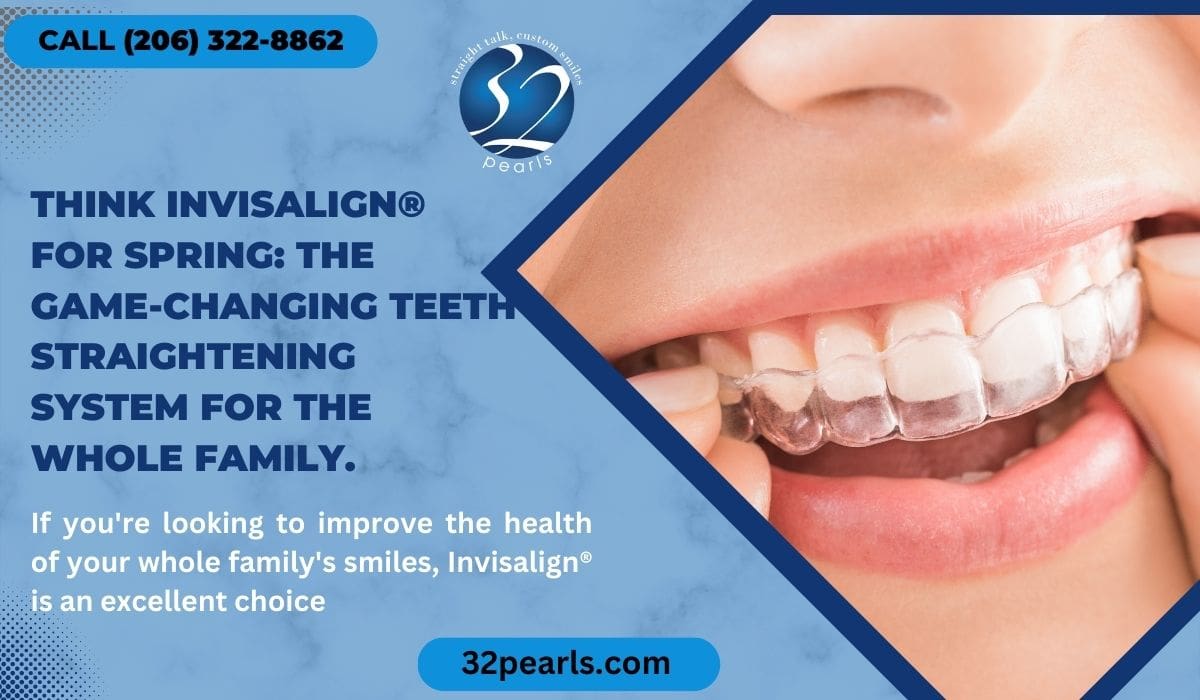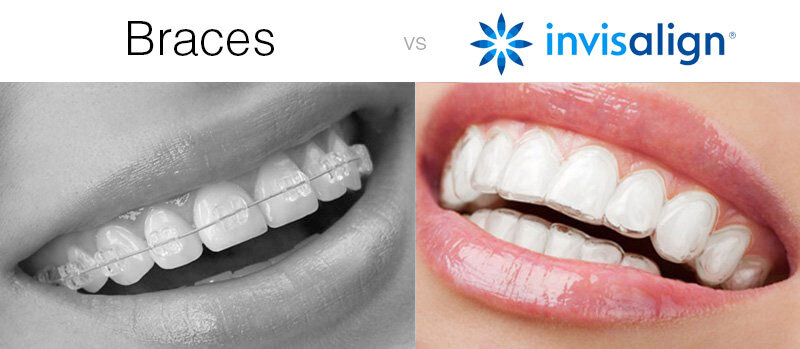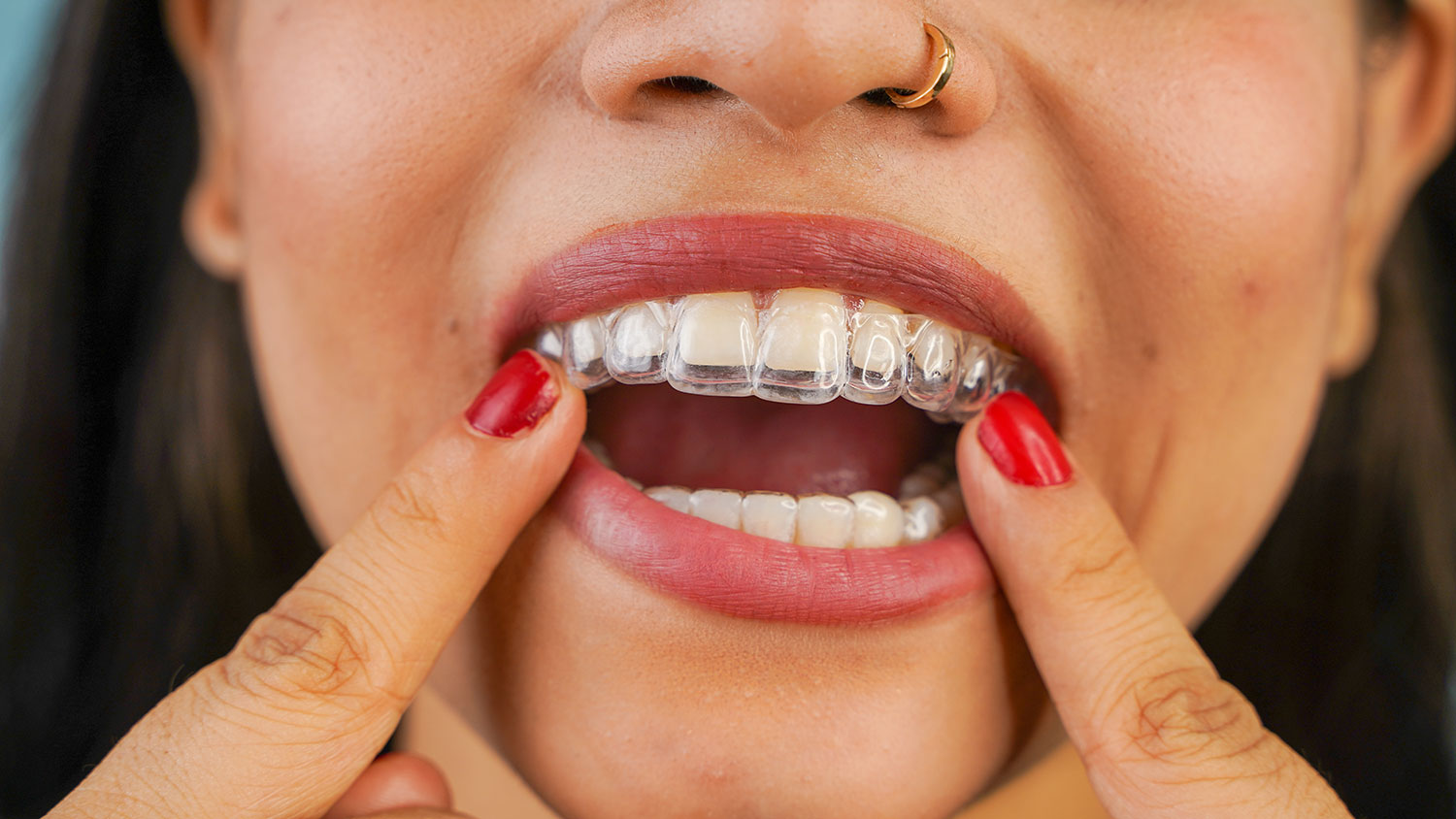Frequently Asked Questions Concerning Invisalign: Everything You Need to Know
Frequently Asked Questions Concerning Invisalign: Everything You Need to Know
Blog Article
Invisalign vs. Conventional Dental braces: Which Alternative Is Right for You?
When considering orthodontic treatment, the option in between Invisalign and conventional braces offers a number of essential factors that merit cautious examination. Invisalign supplies a discreet choice with removable aligners, while conventional braces provide a much more noticeable yet efficient option for serious imbalance.
Review of Therapy Options

On the other hand, traditional braces contain steel braces and cords that are adhered to the teeth. This technique applies constant stress with time to attain positioning. While effective for complicated orthodontic issues, standard braces call for regular sees for modifications and can position obstacles in keeping oral health because of the problem of cleaning about brackets and cords.
Both options have their advantages, and the option typically depends upon certain dental problems, way of life preferences, and client conformity. Eventually, speaking with an orthodontic professional is vital for establishing the most ideal therapy strategy customized to specific requirements. Recognizing the subtleties of each option can dramatically affect the overall success of orthodontic treatment.
Visual Factors To Consider
A considerable variable influencing the option in between Invisalign and conventional dental braces is the visual charm each therapy offers. Invisalign aligners are crafted from clear plastic, making them essentially invisible when used. This discreet look is particularly interesting adults and teens that may really feel uneasy about their orthodontic treatment. The capability to maintain a natural smile throughout the positioning process can dramatically boost the individual's confidence in specialist and social settings.
In comparison, conventional dental braces contain metal brackets and wires, which can be much more noticeable. While improvements in orthodontic innovation have caused the growth of smaller brackets and tinted elastics, conventional braces still maintain a more noticeable account. For some people, the visibility of braces might deter them from seeking required treatment.
Ultimately, the choice between Invisalign and traditional dental braces may rest on personal preferences regarding aesthetics. Patients that focus on discretion usually favor Invisalign, while those that are much less worried concerning visibility might go with typical dental braces. Comprehending the visual ramifications of each choice is important for making an educated decision that straightens with one's lifestyle and choices.
Comfort and Convenience

In regards to comfort, Invisalign aligners are removable, making it possible for individuals to enjoy their favorite foods without restriction and maintain ideal dental health. Brushing and flossing are simplified, as the aligners can be secured during these routines, whereas traditional braces require cautious maneuvering around brackets and cords.
In comparison, standard dental braces necessitate normal modifications, making them less convenient for those with busy timetables. On the whole, the convenience and ease of Invisalign make it an why not try this out enticing choice for numerous people looking for orthodontic therapy.
Treatment Duration and Performance
While both Invisalign and standard dental braces work in correcting dental misalignments, the duration of treatment can vary dramatically between both choices. Typically, Invisalign therapy can take anywhere from 12 to 18 months, relying on the complexity of the instance. The clear aligners function by gradually changing teeth into their preferred placements, and routine follow-ups with an orthodontist assistance ensure development continues to be on course.
In comparison, traditional dental braces often need a longer dedication, generally ranging from 18 months to 3 years. This is due to their set nature and making use of braces and wires, which can be much more reliable for serious imbalances and intricate situations (Invisalign). The therapy efficiency of conventional braces is well-documented, as they enable for specific adjustments and higher control over tooth activity
Inevitably, the option between Invisalign and traditional dental braces may depend upon both the expected therapy duration and the particular dental issues handy. Consulting with an orthodontist is essential, as they can offer customized referrals based on private requirements, making sure the picked approach lines up with desired timeframes and end results.
Cost Comparison and Insurance Alternatives
Price plays a substantial role in the decision-making article procedure for people considering orthodontic therapy, whether choosing for Invisalign or typical dental braces. On standard, the cost of Invisalign arrays from $3,000 to $8,000, while traditional dental braces normally cost between $2,000 and $6,000. Aspects influencing these prices consist of the intricacy of the case, the period of therapy, and geographical area.
Insurance policy protection can significantly affect out-of-pocket expenditures. Many dental insurance strategies supply partial insurance coverage for orthodontic treatments, yet the specifics can differ widely. It is vital for people to review their insurance plan to figure out the extent of protection for either alternative. Usually, traditional dental braces may be extra frequently covered by insurance plans contrasted to Invisalign, which some insurers classify as an aesthetic treatment.
Additionally, several orthodontic methods use versatile layaway plan, making both treatment alternatives much more easily accessible. People ought to inquire about potential funding options and discount rates for ahead of time settlements. Reviewing the complete cost, consisting of insurance benefits and layaway plan, is crucial for making an educated decision that straightens with both aesthetic preferences and budget considerations.

Verdict
In recap, the selection between Invisalign and conventional braces rests on several factors, consisting of aesthetic choices, convenience, therapy duration, and price. Invisalign uses a discreet, detachable option that promotes oral health and dietary flexibility, while conventional dental braces might be extra ideal for complicated dental issues and commonly come at a lower price factor. Ultimately, consultation with an orthodontist is necessary to assess specific situations and establish the most suitable therapy alternative for attaining ideal oral alignment.
When considering orthodontic therapy, the choice between Invisalign and typical dental braces offers a number of crucial elements that warrant cautious assessment.Contrasting Invisalign and standard braces exposes distinct treatment choices for orthodontic modification.While both Invisalign and conventional dental braces are reliable in fixing dental imbalances, the period of therapy can differ considerably in between the two choices.Expense plays a substantial duty in the decision-making process for people taking into consideration orthodontic therapy, whether choosing for Invisalign or conventional braces.In recap, the choice between Invisalign and traditional braces hinges on multiple factors, including aesthetic choices, comfort, treatment period, and price.
Report this page